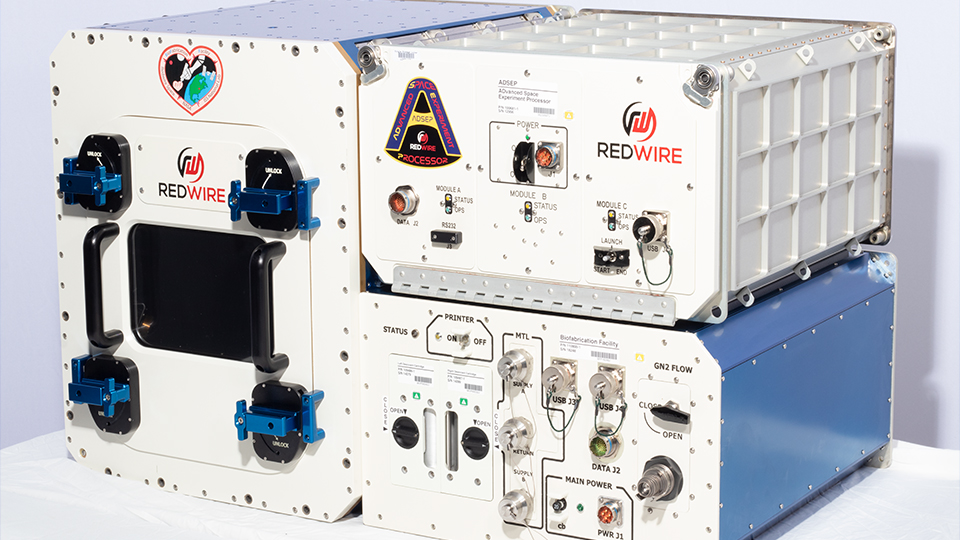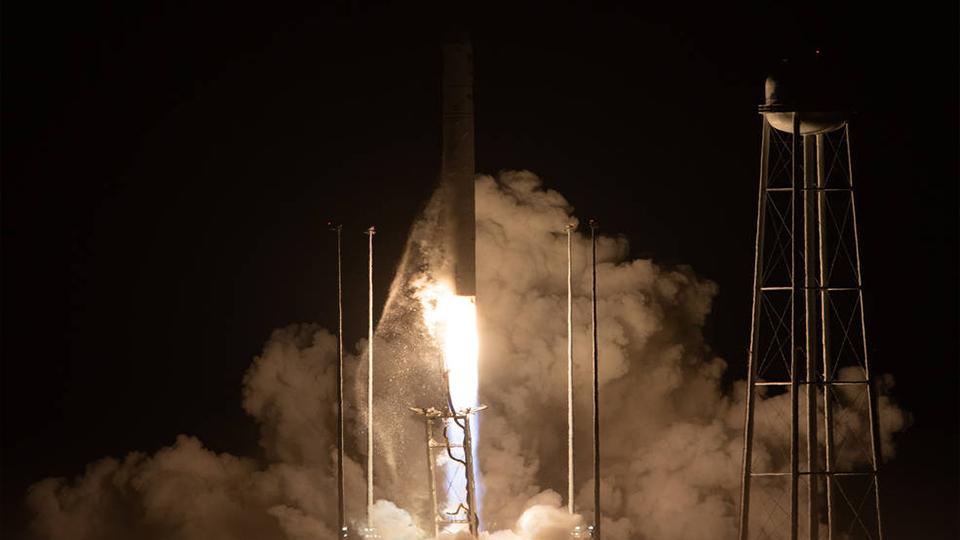Indiana medical manufacturer’s mission to space
Subscriber Benefit
As a subscriber you can listen to articles at work, in the car, or while you work out. Subscribe NowA cargo resupply mission headed to the International Space Station, which is also carrying a 3D bioprinter made in Indiana, is expected to arrive Wednesday. The Northrop Grumman Cygnus spacecraft lifted off Monday from a NASA facility in Virginia. Among its 8,200-pound payload is a medical device built by technicians at Redwire Corp. (NYSE: RDW), formerly known as Techshot Inc., at their facility in the Floyd County town of Greenville.
In an interview with Business of Health Reporter Kylie Veleta, Redwire Vice President of Corporate Advancement for In-space Manufacturing and Operations Rich Boling explained how the Indiana-built BioFabrication Facility could revolutionize the human transplant process.
“We are all striving toward the day, when we can manufacture a complete organ, complete piece of tissue or transplantation into someone sick on Earth,” said Boling. “I wouldn’t say that that’s going to happen, perhaps even by the end of the decade, that is something we’re striving for.”
But before producing full organs, there are more immediate results they hope to achieve, namely printing human cells to fabricate complex tissue structures.

About the size of a microwave, the BFF is the first ever system able to manufacture human tissue in microgravity.
Boling says scientists here on Earth have not been able to successfully 3D-print human tissue because the soft material collapses under its own weight.
“On Earth, in multilayer material often one layer will settle down to the bottom of the petri dish. And so you really tend to get flat tissues unless you want to add some sort of scaffolding to what you print,” explained Boling. “Which is why we do it in space. There’s no sedimentation and no convection in zero G.”
The weightless condition in the vacuum of space eliminates the pull of gravity so the tender structures don’t collapse.
One particular experiment involving the BFF involves creating a human knee meniscus, a thin fibrous cartilage between the surfaces of some joints. The research is being conducted on behalf of the military since knee injuries are among the most common in the armed services.
The meniscus will then be sent back to Earth and studied in a lab.
The technology is also being used to print organoids, essentially a very small version of human organs. Boling says drug efficacy testing can be performed on those tissues.
“Does this drug work well? Or are there counter effects that you don’t want to see when applying this drug to this type of tissue? I think there’s tremendous use for that in the near term,” said Boling.
It was just a year ago when Florida-based Redwire announced it had acquired Techshot Inc., which has operated in southern Indiana for nearly 35 years.
“Techshot’s space bioprinting and other proven biotech solutions in microgravity are some of the most consequential innovations in Low Earth Orbit (LEO) with life-saving benefits on and off our home planet,” said Redwire Chairman and Chief Executive Officer Peter Cannito, following the acquisition. “This is a giant leap forward in our vision for people living and working in space for the benefit of the terrestrial economy.”
While the device and testing will occur in space, technicians in Greenville will be at the controls.
“We had our own mini mission control here, where we talk directly to the astronauts,” said Boling. “Once they get the BFF setup for us, we actually take over from our mission control here, controlling the equipment, running the machine.”
Boling says they have a video feed from inside the BFF, allowing Redwire staff to see while operating controls. He says the fact the device is on the International Space Station, 248 miles from Earth, traveling at 17,500 miles an hour, is not lost on the staff, nor is the liftoff that got it there.
“Watching a rocket launch never gets old. And watching them, well, I never don’t think about all the work that went into getting ready for this day,” said Boling. “To watch that literally never gets old.”

Mission Update:
According to Yahoo News, the Northrup Grumman Cygnus cargo spacecraft, which is carrying the BFF, ran into trouble, as one of its two solar arrays would not deploy. The arrays helped generate power for the capsule that will dock with the ISS.
According to a NASA blog post, “Northrop Grumman is gathering data on the second array deployment and is working closely with NASA.”
The aerospace and defense technology company told NASA that Cyngus has enough power to continue the rest of its journey and rendezvous with the ISS on Wednesday.
